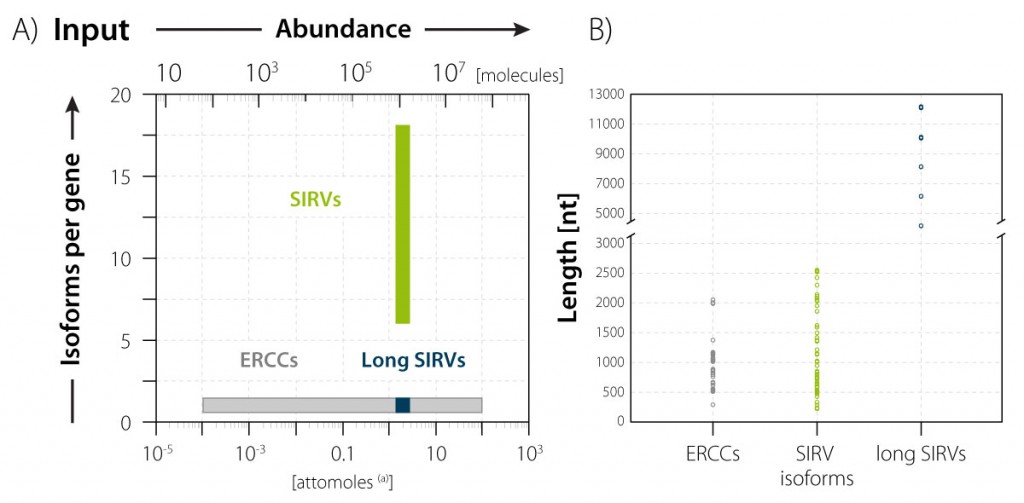Today we launched the Long SIRV module. The long SIRVs are the latest addition to the Spike-In RNA Variants (SIRVs), Lexogen’s portfolio of external RNA reference standards. The 15 RNAs in this module cover the five length categories of 4 kb, 6 b, 8 kb, 10 kb, and 12 kb, each represented by three unique transcripts. These novel spike-in RNAs enable a thorough assessment of the representation of the length aspect in gene expression analyses.
By using these external standards, RNA-Seq pipelines running on Oxford Nanopore Technologies™ and Pacific Biosciences™ long-read platforms can finally be assessed for their performance in analyzing RNAs matching and exceeding the average mRNA length in eukaryotes. The currently available spike-in RNAs do not exceed 2.5 kb in length. Hence, only with the long SIRVs aspects such as processivity of reverse transcription and direct RNA-Seq, PCR length bias, full-length coverage, length restrictions during purifications, and performance of data analysis pipelines can be assessed and validated. On short-read platforms such as Illumina®, the handling of long RNAs by the respective library preparation methods and the re-assembly of these lengthy transcripts by the data analysis pipeline can be monitored.
The long SIRV module is available in Lexogen’s SIRV-Set 4 in combination with two other modules, the SIRV Isoforms and the ERCC Mix. The 69 SIRV isoforms (mapping to 7 gene loci) comprehensively reflect splicing and transcriptional complexity, and the 92 ERCC transcripts cover the abundance aspect of transcriptome complexity by spanning a concentration range of 6 orders of magnitude (Fig. 1A). The long SIRVs and the SIRV Isoforms are present in equimolar concentrations in SIRV-Set 4, thereby clearly assigning the isoforms, concentration, length aspects of transcriptome complexity (Fig. 1B) to individual modules.
Figure 1. A) Isoform and abundance complexity and B) Length complexity in SIRV-Set 4. The SIRV isoform and ERCC transcripts control for two main dimensions of transcriptome complexity: isoforms and abundance, and the long SIRVs add controls for length complexity.
The sequences of all SIRV and ERCC transcripts do not overlap (in a relevant search window) with any transcript annotated in public data bases; NGS reads derived from spike-in RNAs can therefore be uniquely assigned to the “SIRVome”, the entirety of the annotated spike-in sequences (Fig. 2).
Figure 2. SIRV modules. The SIRV isoforms, single-isoform transcripts (ERCCs), and long SIRVs are synthetic RNA molecules that mimic three aspects of transcriptome complexity, isoforms, abundance, and transcript length. The SIRVome is the corresponding artificial reference genome.
Usually, only 1% of all sequencing reads needs to be dedicated to the SIRVs for a comprehensive assessment, and since a tube with 10 µl SIRV-Set 4 is sufficient to spike 1000s of samples, all samples in an experiment can be routinely spiked to determine concordance of the resulting data sets.










